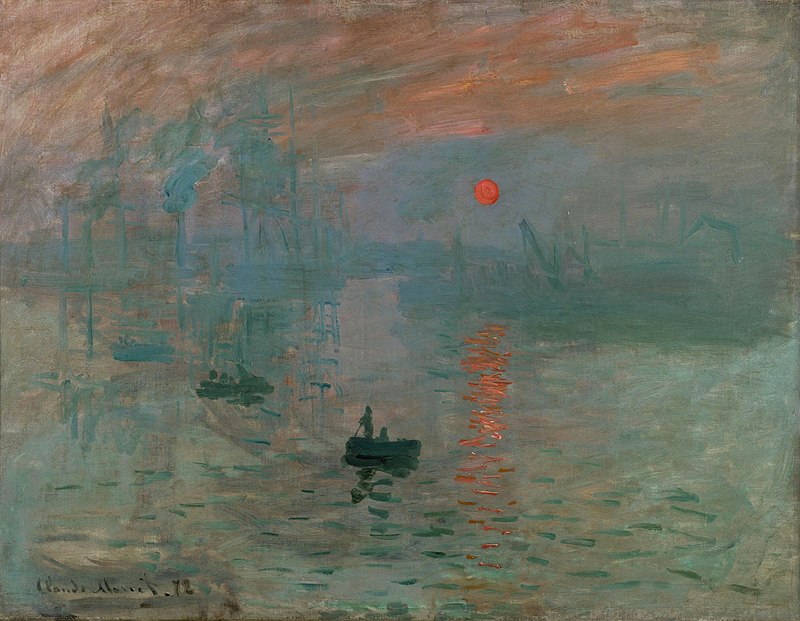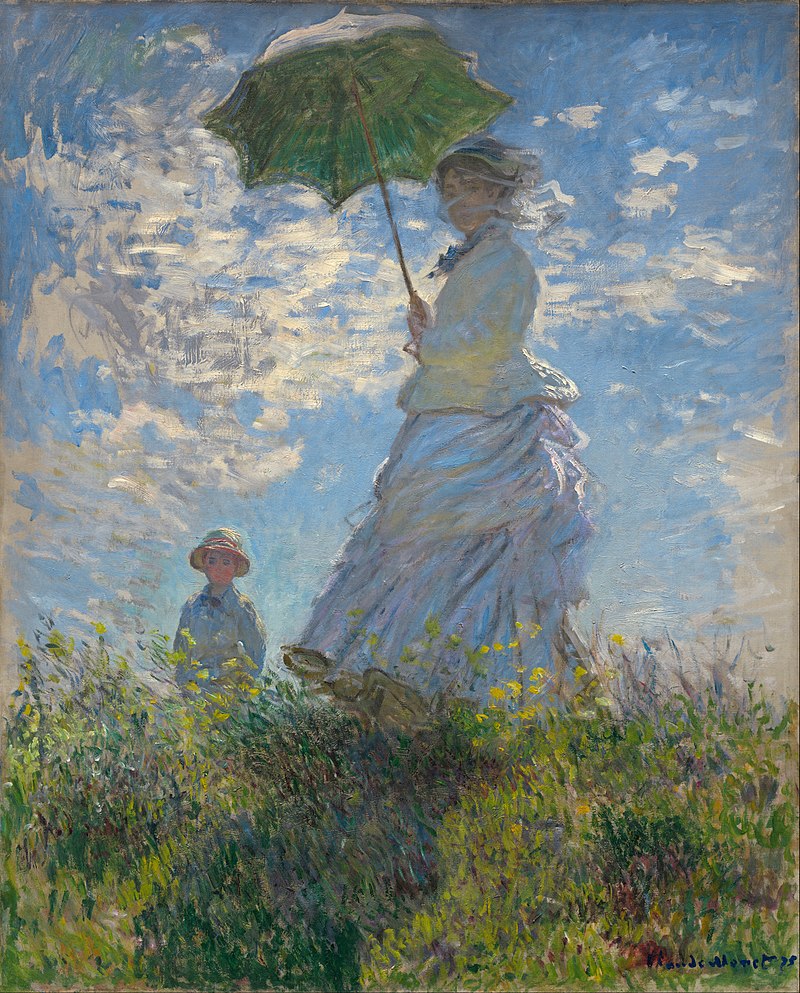Monet is a prominent figure in the Impressionist movement, known for his revolutionary approach to capturing light and atmosphere in his artworks. His use of short brushstrokes and emphasis on the fleeting effects of natural light were central to the Impressionist style. Some of his notable works include:
Impression, Sunrise:
Claude Monet’s “Impression, Sunrise” is a seminal work in the Impressionist movement, renowned for its revolutionary portrayal of light and atmosphere. Created in 1872, this masterpiece depicts the port of Le Havre at sunrise, utilizing short, expressive brushstrokes to capture the fleeting effects of natural light on the water and the city skyline. This painting is a prime example of Monet’s departure from traditional representation, instead focusing on the interplay of light and color to evoke a sense of atmosphere and emotion. “Impression, Sunrise” holds a significant place in art history as it not only gave the Impressionist movement its name but also challenged established artistic conventions, paving the way for a new and innovative approach to visual representation. The ethereal quality of the painting and its emphasis on capturing the essence of a moment solidify its status as a cornerstone of Monet’s oeuvre and the Impressionist style as a whole.

Impression, Sunrise oil on canvas, 1872, Musee Marmotten Monet, Paris, France

Claude Monet, Reflections of Clouds on the Water-Lily Pond, c. 1920, 200 × 1276 cm (78.74 × 502.36 in), oil on canvas, Museum of Modern Art, New York City
Water Lilies Series:
Claude Monet’s “Water Lilies” series is a testament to his fascination with capturing the ephemeral qualities of light and nature. Created between 1897 and 1926, this iconic series of paintings depicts water lilies floating on the surface of ponds, reflecting the ever-changing play of light and color. These serene and ethereal works showcase Monet’s mastery in capturing the essence of a moment and his dedication to exploring the transitory nature of natural phenomena.
The “Water Lilies” paintings exemplify Monet’s innovative use of color, brushwork, and composition to convey the interplay of light, water, and vegetation. By focusing on the subtle shifts in atmosphere and the interplay of light and shadow on the water’s surface, Monet created a poetic and immersive experience for the viewer. The fluidity and dreamlike quality of these works invite contemplation and evoke a sense of tranquility, inviting the audience to immerse themselves in the beauty of nature.
Monet’s “Water Lilies” series represents a profound exploration of the Impressionist style, revealing his ability to infuse everyday scenes with a timeless and contemplative beauty. These paintings remain a quintessential part of Monet’s legacy, demonstrating his enduring impact on the art world and his ability to capture the essence of fleeting moments with unparalleled skill and sensitivity.

Woman with a Parasol, Oil on canvas, 1875, National Gallery of Art, Washington, USA
Claude Monet’s “Woman with a Parasol” is an oil on canvas painting created in 1875 and is housed in the National Gallery of Art in Washington, USA. This artwork portrays Monet’s wife, Camille, and their son. The painting captures a moment of leisure on a sunny day, with the figures depicted in a countryside setting. The vibrant colors and loose brushstrokes evoke a sense of movement and spontaneity, characteristic of Monet’s Impressionist style. The contrasting light and shadow play a significant role in highlighting the joyful and carefree atmosphere of the scene, while the billowing parasol adds a dynamic element to the composition. Overall, “Woman with a Parasol” exemplifies Monet’s ability to infuse everyday moments with a sense of timeless beauty and tranquility.
